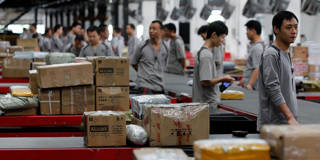In recent years, as China’s economy has become increasingly reliant on high-tech and modern service industries, jobs and growth have become concentrated in a few high-productivity cities. In fact, it is this inter-urban competition that has driven China’s economic transformation.
SHANGHAI – China’s traditional industries are suffering. In the last five years, the country’s northeastern region – once a hub of basic industries like oil and steel – has been facing accelerating decline, as have the rich mineral resource centers in places like Hebei and Inner Mongolia. Over the last decade, about one-third of China’s 600 cities have contracted. The prospects of dispersed rural populations far away from China’s megacities have diminished as well. But all this bad news is actually a result of what is widely considered very good news: China’s economic transformation is progressing.

SHANGHAI – China’s traditional industries are suffering. In the last five years, the country’s northeastern region – once a hub of basic industries like oil and steel – has been facing accelerating decline, as have the rich mineral resource centers in places like Hebei and Inner Mongolia. Over the last decade, about one-third of China’s 600 cities have contracted. The prospects of dispersed rural populations far away from China’s megacities have diminished as well. But all this bad news is actually a result of what is widely considered very good news: China’s economic transformation is progressing.